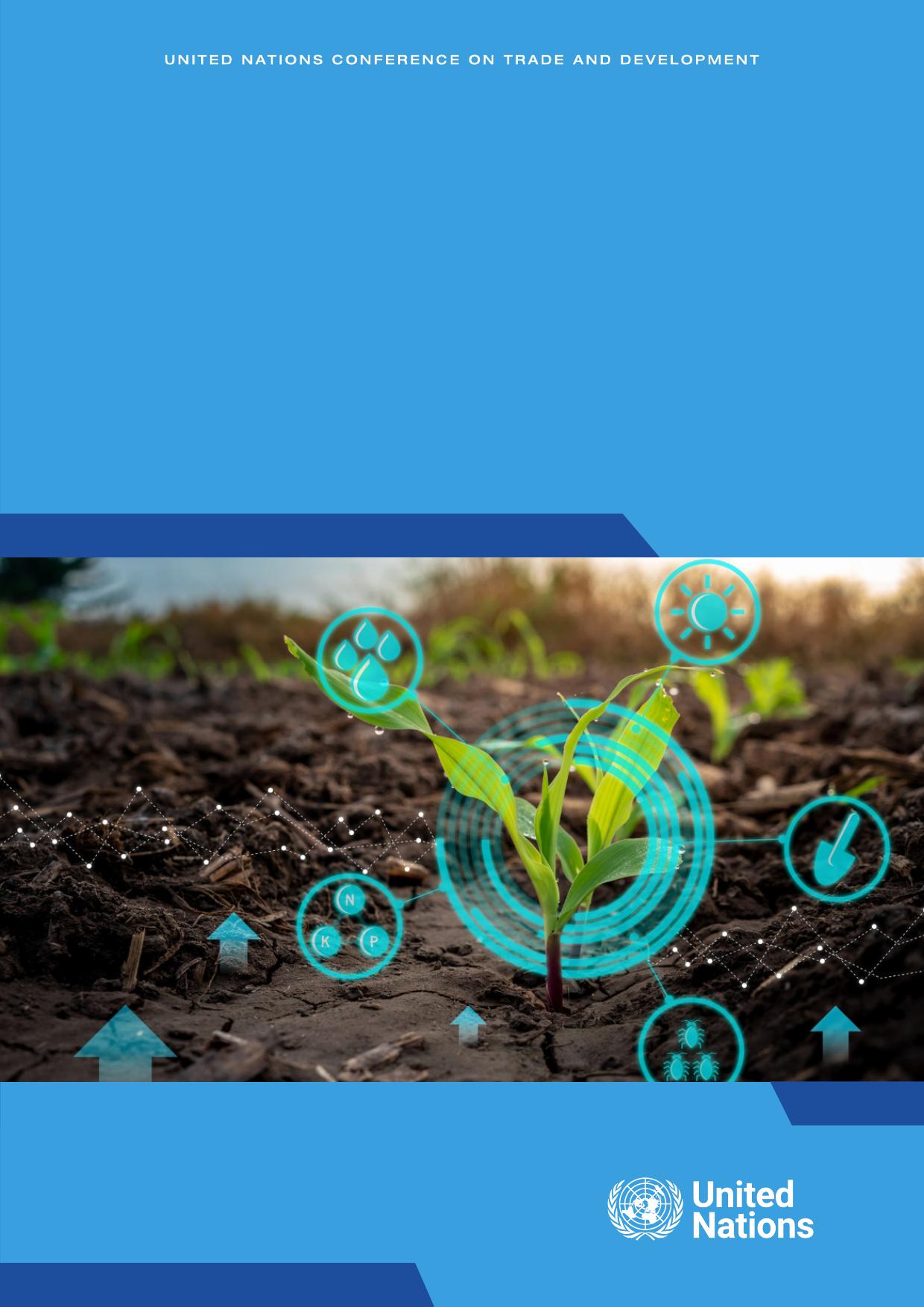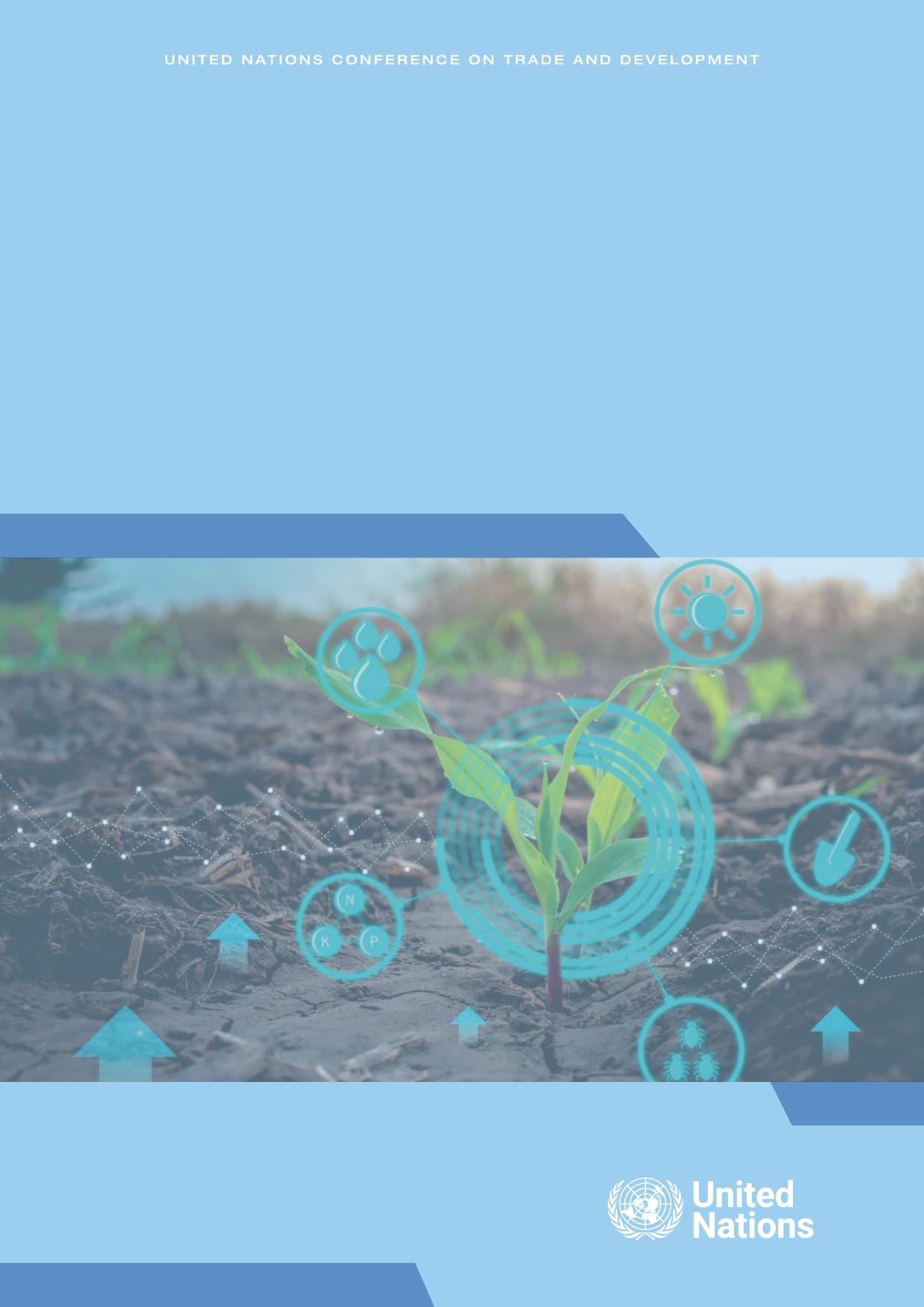UNDERSTANDINGVOLUNTARYSUSTAINABILITYSTANDARDSAstrengths,weaknesses,opportunities,andthreatsanalysisUNDERSTANDINGVOLUNTARYSUSTAINABILITYSTANDARDSAstrengths,weaknesses,opportunities,andthreatsanalysisGeneva,2023ii©2023,UnitedNationsThisworkisavailablethroughopenaccess,bycomplyingwiththeCreativeCommonslicencecreatedforintergovernmentalorganizations,athttp://creativecommons.org/licenses/by/3.0/igo/.Thefindings,interpretationsandconclusionsexpressedhereinarethoseoftheauthor(s)anddonotnecessarilyreflecttheviewsoftheUnitedNationsoritsofficialsorMemberStates.ThedesignationsemployedandthepresentationofmaterialonanymapinthisworkdonotimplytheexpressionofanyopinionwhatsoeveronthepartoftheUnitedNationsconcerningthelegalstatusofanycountry,territory,cityorareaorofitsauthorities,orconcerningthedelimitationofitsfrontiersorbounda-ries.MentionofanyfirmorlicensedprocessdoesnotimplytheendorsementoftheUnitedNations.Photocopiesandreproductionsofexcerptsareallowedwithpropercredits.Thispublicationhasnotbeenformallyedited.UnitedNationspublicationissuedbytheUnitedNationsConferenceonTradeandDevelopmentUNCTAD/DITC/TAB/2023/3eISBN:978-92-1-002723-6iiiCONTENTSAcknowledgments.............................................................................................................................vAbbreviationsandacronyms...........................................................................................................viAbstract............................................................................................................................................viiIntroduction.....................................................................................................................................viii1.Theinternaldimension:VSSstrengthsandweaknesses........................................................11.1VSSinstitutionaldesign.........................................................................................................11.1.1.LinkingVSSdesignandimpacts.................................................................................11.1.2.ValuedistributionthroughVSS....................................................................................21.2ConsultationandadoptionofVSS........................................................................................31.2.1.VSSconsultationmechanism.....................................................................................31.2.2.AdoptionofVSS.........................................................................................................42.Theexternaldimension:VSSopportunitiesandthreats.........................................................52.1Nationalandinternationalsustainabilitystandards.................................................................52.1.1India’scaseonprivatesustainabilitystandards...........................................................52.1.2.PerceptionsofinternationalVSSinChina...................................................................62.1.3.ThecaseofnationalstandardsdevelopedforpalmoilsectorinAsiancountries.........72.1.4.ThecaseofregionalstandardsdevelopedforAfrica–EcoMarkAfrica.......................72.1.5.ThecaseofBrazil’sindustrysectorsandit’sadoptionofinternationalVSS.................82.2VSSandtradepolicy............................................................................................................92.2.1.VSSundertheWTO.................................................................................................102.2.2.Non-tradeobjectivesintradeagreements................................................................102.2.3.ThetradeimpactofVSS...........................................................................................112.3VSSandduediligence........................................................................................................122.3.1.Implementationandenforcement.............................................................................122.3.2.Implicationsfordevelopingcountries........................................................................132.4VSSinpolicymixes.............................................................................................................142.4.1.Goal-basedgovernanceandzero-deforestationcommitments(ZDC).......................142.4.2.Shiftawayfromvoluntary,market-basedregulatoryapproaches...............................153.Conclusion.................................................................................................................................17Bibliography..............................................................................................................................19Annex.......................................................................................................................................21ivUnderstandingVoluntarySustainabilityStandards::AStrengths,Weaknesses,Opportunities,andThreatsAnalysisListofFiguresFigure1SalientfeaturesofincentivizationprinciplesandcriteriaofschemesdevelopedbyQCI..6Figure2ThetradeimpactofVSS:themainquestions..............................................................11ListofTablesTable1InternaldimensionsofVSSinstitutionaldesign................................................................3Table2InternaldimensionsofVSSsustainabilityadoption..........................................................4Table3ExternaldimensionsofVSSinteractionwithnationalstandards......................................9Table4ExternaldimensionsoftheVSSinteractionswithtradepolicyandtradeagreements....12Table5ExternaldimensionsoftheVSSinteractionswithduediligence.....................................14Table6ExternaldimensionsoftheVSSinteractionswithpolicymixes......................................15vAcknowledgementsACKNOWLEDGEMENTSThisreportwaspreparedbySantiagoFernandezdeCordoba,NiematallahE.A.Elamin,SitiRubiahLambertandRupalVerma,TradeAnalysisBranch,DivisiononInternationalTradeandCommodities,UNCTAD,andAxelMarx,CharlineDepoorter,LaraHelsenandEvaBoonaert,LeuvenCentreforGlobalGovernanceStudies,KatholiekeUniversiteitLeuven(KULeuven).ThereportsetsouttheVSSSWOTAnalysisfromresearchfindingsstemmingfromtheannualAcademicAdvisoryCouncilmeetingheldattheKULeuvenon27-28October2022.TheAcademicAdvisoryCouncil1providestheUnitedNationsForumonSustainabilityStandards(UNFSS)independentadviceonallaspectsofVoluntarySustainabilityStandardsdesignandimpactthroughresearch.The33academicsmeeteveryyeartodiscusstopicsoftheirresearchinterestsintheformofexpertise.1ToknowmoreabouttheAcademicAdvisoryCouncil2022meeting:https://unctad.org/meeting/unfss-academic-advisory-council-annual-meeting-2022-voluntary-sustainability-standards-swotviUnderstandingVoluntarySustainabilityStandards::AStrengths,Weaknesses,Opportunities,andThreatsAnalysisABBREVIATIONSANDACRONYMSAACAcademicAdvisoryCouncilARSOAfricaRegionalStandardizationOrganizationASIAluminiumStewardshipInitiativeEUEuropeanUnionEMAEcoMarkAfricaGlobalGAPGlobalGoodAgriculturalPracticesGVCsGlobalValueChainsIPIECAInternationalPetroleumIndustryEnvironmentalConservationAssociationISPOIndonesiaSustainablePalmOilMSPOMalaysiaSustainablePalmOilRSPORoundtableonSustainablePalmOilQCIQualityCouncilofIndiaSASSMAQProgramofResponsibleActionandtheSafety,Health,EnvironmentandQualityAssessmentSystemSDOsStandardDevelopmentOrganizationSDGsSustainableDevelopmentGoalsSMEsSmallandMediumEnterprisesSWOTStrengths,Weaknesses,Opportunities,ThreatsUNFSSUnitedNationsForumonSustainabilityStandardsVSSVoluntarySustainabilityStandardsWTOWorldTradeOrganizationZDCZero-deforestationCommitmentsviiAbstractABSTRACTVoluntarySustainabilityStandards(VSS)haveemergedaskeygovernancetoolsinglobalvaluechainsandprovideanavenueforenablingsustainableproductionandconsumptionpractices.TherapidgrowthinthenumberofVSSoverthelastfewdecadeshaspromptedaconsequentgrowthinthenumberofstudiesaroundVSS.WhileextantliteraturefocussesonadiversesetoftopicscentredaroundVSS,thereisnoonestudythatpresentsthestrengths,weaknesses,opportunities,andthreats(SWOT)ofVSS.GiventhegrowingpresenceofVSS,itbecomesimportanttounderstandthesedimensionsrelatedtoVSS.ThisreportthereforeprovidesasuccinctSWOTanalysisofVSS.ThereportpresentsanalysesandderivesresultsfromtheworkofkeyresearchersandpractitionersinthefieldofVSSanddistilsconclusionstoeffectivelyunderstandtheuseofVSS,theirpotentialandtheirinteractionswithseveralupcomingtraderegulations.viiiUnderstandingVoluntarySustainabilityStandards::AStrengths,Weaknesses,Opportunities,andThreatsAnalysisINTRODUCTIONOverthepastfewdecades,VoluntarySustainabilityStandards(VSS)haveemergedasimportanttoolstoaddresskeysustainabilitychallenges.Anincreasingnumberoffirmsareputtingthesestandardsatthefrontandcentreoftheirsustainabilityapproaches(UNFSS,2022).TheUNFSS(2013:3)definesVSSas“standardsspecifyingrequirementsthatproducers,traders,manufacturers,retailersorserviceprovidersmaybeaskedtomeet,relatingtoawiderangeofsustainabilitymetrics,includingrespectforbasichumanrights,workerhealthandsafety,theenvironmentalimpactsofproduction,communityrelations,landuseplanningandothers”.EventhoughVSSarevoluntarybynature,theirincreaseduptakeandconsumerdemandforsustainableproductssuggestthatVSSarebecomingincreasinglyimportant.Moreover,theyarelikelytobecomeevenmoreprominentinthecomingyearsasseveralnewregulatoryinitiativesareimposingduediligencerequirementsonfirms.Therehasbeenagrowingconsensusamongmanysegmentsofsocietyabouttheincreasingimportanceofbothsustainabilityandcrisismanagement.Thisconsensusisborneoutbyabodyofacademicandprofessionalliterature,theeffortsoftheinternationalcommunityatthegloballevel,andthepromulgationoflawsandregulationsatnationalandlocallevels.ThisreportpresentsaStrengths,Weaknesses,Opportunities,andThreats(SWOT)analysisofVSSstruc-turedaroundtheinternalandexternaldimensions,withadevelopmentrelatedlens.ThemethodologicalapproachofthisSWOTanalysisderivesfromtheAcademicAdvisoryCouncil(AAC)collectiveresearchexpertiseamongtwenty-fiveacademicexpertsandpractitionersaroundtheworld,inthewaytheystudyandpracticeVSS.TheSWOTframeworkisanessentialtooldesignedtofacilitatearealistic,fact-based,datadrivenoutlookofinitiatives,suchasVSS,todistilinformationaboutinternalandexternalforcesthatmaygenerateimpactsondecision-making.TheSWOTisafundamentaltoolforexpertsandpractitionerstoevaluateandidentifycurrentandfuturepotentials.Ontheinternaldimension,thereportexploresthestrengthsandweaknessesofVSSinadvancingthesustainabilityagenda,especiallyindevelopingcountries,withaspecificfocusonVSSinstitutionaldesignandontheirimpactsontheground.ThediscussionsultimatelydistilthesettingsinwhichVSSareeffec-tiveandidentifyareasforimprovement.Ontheexternaldimension,thereporthighlightstheopportunitiesandthreatsthatVSSfaceasaprivategovernancetoolwhichinteractswithotherregulatoryinitiatives.Morespecifically,thereportexploresdevelopmentsintradepolicy,nationalstandards,duediligenceregulationsandpolicymixesandthewayVSSfitinthese.ThereportassessestheimplicationsofthesepolicydevelopmentsfortherolethatVSScanplaytocontributetoaconsolidatedregulatoryframeworkforsustainabilityandidentifiestherelatedchallengesespeciallyfordevelopingcountries.Thisreportisdividedintothreechapters.Thefirstchapterbreaksdowntheinternaldimensionintotwosections:VSSinstitutionaldesign,andVSSconsultationandmechanism.ThesecondchapterbreaksdowntheexternaldimensionofVSSintofoursections,ineachofwhichtheroleofVSSisexplored:tradepolicy,nationalstandards,duediligenceregulations,andpolicymixes.BothchapterspresentextantandupcomingresearchrelevantfortheanalysisofVSSinternalandexternaldimensions.Followingthesetwochaptersthatpresentatwo-dimensionalanalysis,chapterthreeprovidestheconclusions.11Theinternaldimension:VSSstrengthsandweaknessesOntheinternaldimensionoftheSWOTanalysis,thereporthighlightsthestrengthsandweaknessesofVSS,focusingonhowVSSoperateandhowthisrelatestotheimpactofVSS,equalvaluedistributionopportunitiesviaVSS,consultationmechanismsinVSSandadoptionofVSS.1.1VSSINSTITUTIONALDESIGNThedesignofVSShaslongbeenarguedasoneofthekeyfactorsthatinfluencetheeffectivenessofthestandards(Marxetal.,2022;LambinandThorlakson,2018;Fiorinietal.,2019).However,VSSarenotconsistentintheirdesignandvariationoccursevenamongVSSthatarerelatedtothesameproductcategory.ThisbegetsexplorationonhowVSSaredesigned,setstandardsandenforcethem,andontheeffectsofVSSdesignontheirimpactsonthegroundandonvaluedistribution.Intermsofstrengthsandweaknesses,thissectionunravelsthestateofplayofstandard-settingandenforcementmechanismsthroughmulti-stakeholderapproachesandidentifiesroomsforimprovement.1.1.1LinkingVSSdesignandimpactsVSShavegrowninnumberoverthelastdecadesandinsomesectors,suchasagriculture,theproliferationofVSShasbeensubstantial(E.A.ElaminandFernandezdeCordoba,2020;FernandesMartinsetal.,2022;Tayleuretal.,2017)theyhavebecomeamarketrealityandnon-compliancecanleadtotheexclusionofproducersfromGlobalValueChains(GVCs.TheITCStandardsMap2isoneoftherepositoriesofVSSwhichcurrentlylistsmorethan320VSSandcollectsinformationaboutVSSdesignandcontent.Morespecifically,theITCStandardsMapallowsfortheidentificationofproducttype,scope,andrequirementsaVSScoversandprovidesinformationongovernanceattributesofaVSSsuchashowstandardsaresetandhowconformitywithstandardsisassessed.AsVSSexpandedinnumber,researchersstartedfocusingonthedesignofVSSinrelationtohowtheysetandenforcestandards,morespecificallythroughthird-partyaudits,andhighlightedthatthereissignificantvariationinthedesignofVSS.Inparallel,impactstudiesonVSShaveshowninconclusiveevidenceonthe2ITCStandardsMapcanbeaccessedat:https://standardsmap.org/en/home©witsarut-AdobeStock2UnderstandingVoluntarySustainabilityStandards::AStrengths,Weaknesses,Opportunities,andThreatsAnalysissustainabilityimpactsofVSSontheground,whichareheterogeneousandhighlycontextspecific.Hence,morerecently,theresearchfocushasbeenshiftingtowardsunderstandinghowvariationinVSSdesignrelatestovariationintheirsustainabilityimpactsontheground.Inthatrespect,akeyfactorlinkingVSSdesignandimpactsiscompliance,i.e.theextenttowhichstandardsareeffectivelyimplementedbyVSSadopters.CurrentresearchputsforwardthatVSScanencouragecompliancethroughtheirdesign,whichinturnincreasesthepotentialforpositivesustainabilityimpacts(Marxetal.2022).Inparticular,Depoorter(forthcoming)identifies3mechanismsorpathwaysthroughwhichVSSdesigncanfostercompliance:(1)theenforcementmechanism,whichconsistsincontrollingcomplianceandsanctioningnon-compliance;(2)themarket-basedincentivesmechanism,whichconsistsinencouragingandrewardingcompliance;and(3)thecapacity-buildingmechanism,whichconsistsinenhancingtheabilityofVSSadopterstocomplywithandimplementsustainabilitystandards.ThesemechanismsareoperationalisedintoseveraldesignattributesandindicatorsthatallowtoevaluatethedegreetowhichaVSSusesthesemechanismsrespectivelytogeneratecompliance,aswellastogethertoassessaVSSdesignoverallcompliance-orientation.Fromanempiricalanalysisof13VSS,theresearchfindsheterogeneityintheoverallcompliance-orientationofthedesignofdifferentVSS.Inaddition,VSSdifferintermsofthemechanismstheyusetogeneratecompliancethroughtheirdesign,withsomeVSSrelyingstronglyontheenforcementmechanism,whileothersinvestmoreinthecapacity-buildingmechanismtofosterstandardsimplementation.FactorssuchasidentityelementsofVSSortheirhistorycanexplainthesechoices.TheresearchalsohighlightsdifferencesintheextenttowhichthemechanismsareusedacrossVSS,withtheenforcementmechanismbeingmostextensivelyused,whichstemsfromanauditcultureinvoluntaryregulatoryschemes.Yet,effortsarealsomadetodevelopthecapacity-buildingandmarket-basedincentivesmechanisms.ThediversityinthemechanismsusedtogeneratecompliancethroughVSSdesignhasimplicationsfortheiradoption,legitimacyandeffectiveness.1.1.2ValuedistributionthroughVSSEquitablevaluedistribution,derivingfromthestakeholdertheory,referstothefactthatthevaluereturnedtostakeholdersshouldbecommensuratewiththevaluetheycontributedtoitscreation.Extantresearchsuggeststhatbusinessescanpromoteequitablevaluedistributionthrough:-Shareddecisionmaking-Sharedprofits-SharedcostofproductionUnequalvaluedistributionleadstoincomeandhealthinequalityatthelocal,nationalandinternationallevelswhichfurtherchallengestheachievementofkeySDGslikeSDG1–nopoverty,SDG2–zerohunger,SDG8–decentwork,andSDG10–reducedinequalities.ItisthuspertinenttoanalysehowVSS,throughtheirdesignandwork,contributetoequitablevaluedistribution.Aforthcomingreviewstudy3doneon19ISEAL4memberVSShasfoundthateachVSSaimstopromotesocialsustainability,decentwork,economicbenefitstocommunitiesetc.,therebycoveringoneortheotheraspectofequitablevaluedistribution.3ReviewisbeingdonebyMs.ElizabethA.Bennett,Fellow,CarrCenterforHumanRights,HarvardKennedySchool(Cambridge,MA,US),JosephM.HaAssoc.ProfessorofInternationalAffairs,Lewis&ClarkCollege(Portland,OR,US).Formoreinformation:www.ElizabethAnneBennett.com/ElizabethBennett@lclark.edu4MoreinformationonISEALcanbeaccessedat:https://www.isealalliance.org/3CHAPTER1:Theinternaldimension:VSSstrengthsandweaknessesHowever,researchindicatedthatinpractice,VSSdonotcurrentlysupportstrategiesthatpromoteequitablevaluedistribution,andtheyrarelyimproveequitablevaluedistribution.Thus,awayforwardwouldbetoencourageVSStosupportstrategiesthatpromoteequitablevaluedistribution.Table1belowprovidesasummaryoninternaldimensionsofVSSinstitutionaldesign.Table1InternaldimensionsofVSSinstitutionaldesignStrengthsWeaknesses•VSScangeneratecompliancewiththeirstandards–andtherebyincreasetheirpotentialtogeneratepositivesustainabilityimpacts–throughdifferentmechanismsintheirdesign.•Intheory,VSSdoaimtopromoteequitablevaluedistribution,byincludingintheirdesignanddocuments,elementslikepromotingsocialsustainability,decentwork,economicbenefitstocommunities,etc.•ThereisvariationinVSSdesignwhichfurtherdeterminesthepotentialimpactsthatVSScanhave.•VSSlacksystemsthatsupportequitablevaluedistribution.1.2CONSULTATIONANDADOPTIONOFVSSSignificantresearchhasbeendedicatedtoassessingtheeffectivenessofVSSinfosteringsustainableenvironmental,social,andeconomicoutcomes.WhiletheliteratureseemstoindicatepositiveyetsmalleffectsofVSSonsustainability,theevidenceremainsmixedandhighlycontextspecific(UNCTAD,2021;UNFSS,2022).Besides,thereremainsanimportantneedforreliableandsystematicdatatoassessthesustainabilityimpactsofVSS.ThissectiontakesstockofthecurrentevidenceofVSSimpactsonthedifferentsustainabilitydimensions.ThestrengthsandweaknessesofVSSandtheirpotentialtogeneratesustainableoutcomeshasbeenarticulatedaroundtwokeydimensions:(1)VSSconsultation,and(2)VSSadoption.1.2.1VSSconsultationmechanismThedesignandcontentofVSSareimportantdeterminantsofVSSimpactssincetheyreflectthelevelofambitionofVSSinreachingsustainableoutcomesthroughdefiningspecificrequirementsthattheiradoptersneedtofulfil.VSSvaryintheirdesignandcontent,andhenceintheirpotentialtogeneratepositivesustainabilityimpacts,whichhasbeenhighlightedinSection1.1.Inadditiontothat,VSSdesignandcontentevolveovertimeandinparticular,manyVSShavededicatedprocedurestoregularlyrevisetheirstandardsandallowforstakeholderinputintheprocess.Inthisrespect,VanderVen(2022)hasstudiedthatstakeholders’consultationmechanismsandtheinfluenceofstakeholderscancontributetoinputsonthecontentofVSS.Althoughstakeholders’consultationmechanismsvaryacrossVSS,theanalysisshowsthatthereareshortcomingsintheirdesignastheytendtoexcludecertainstakeholders,resourcesandknowledgetoparticipateintheseconsultations.Hence,thereisalackofdiversityinstakeholders’participationandasaresultinputfromcertaintypesofstakeholdersisoverrepresented.Besides,theresearchindicatesthatstakeholders’commentsaimedatweakeningstandardsaremorelikelytobeintegratedinthenewstandards’versionsthancommentsaimingtostrengthenthem,whichresultsfrompressurestokeepbarrierstoentryincertificationlow(vanderVen,2022).Thisvulnerabilitytostakeholders’inputconstitutesaweaknessofVSS,butalsorealisticoutputsintermsoftheirpotentialtogenerateimpacts.4UnderstandingVoluntarySustainabilityStandards::AStrengths,Weaknesses,Opportunities,andThreatsAnalysisThereisthereforeaneedforamorediversemediumofstakeholders’consultationtoimproveinclusivenessintheprocesseslikestandardimprovements,andaneedforincreasedtransparencyandaccountabilityinVSSresponsestostakeholder’sinput.1.2.2AdoptionofVSSAdoptionconstitutesanotherkeydeterminantforVSSeffectiveness,sinceVSSthatareonlymarginallyadoptedhavelesspotentialtogeneratesustainabilityimpacts,eveniftheyareambitiousinthestandardscontent(UNFSS,2020).Yet,ensuringwidespreadandmeaningfuladoptionremainsachallengeformostVSS.Inparticular,threemajorissuesinVSSadoptionstandout.First,VSScontinuetoexcludesmallholdersfromcertificationdynamicsandhencefromreapingpotentialbenefitsofcertification.Enteringcertificationremainscostlyforsmallholderswhoarenonethelesstheprimaryvictimsof,andsometimesimportantcontributorsto,sustainabilityissues.Forexample,researchshowsthatcertificationofpalmoilplantationsbytheRoundtableforSustainablePalmOil(RSPO)seemstohaveapositivealthoughsmallimpactonhaltingdeforestationontheseplantations,whilequestionsareraisedonthescaleofsmallholderpalmoilgrowers’contributiontodeforestationandontheimplicationsoftheirexclusionfromcertification(HeilmayrR.,etal.,2020).Second,thereremainsaself-selectionbias(or‘low-hangingfruit’bias)incertification,asVSSaremorelikelytobeadoptedbyactorswhosepracticesarealreadyinlinewithVSSrequirements.Forexample,extantresearchonRSPOinIndonesiahighlightsabiasintheadoptionofRSPOcertificationtowardsplantationsthathavesmallerforestareasandwhosepalmtreeswereplantedatanearlierdate,hencemakingiteasierformanagersoftheseplantationstofulfilRSPOrequirementslinkedtonodeforestation.Thisself-selectionbiasposesquestionsonthetransformativepotentialofVSStofostersustainability.Third,inordertopromotewideradoption,VSSoftentrytokeepbarrierstoentryincertificationrelativelylow(ibid.).Yet,thiscreatestrade-offsbetweenadoptionandstringencyofstandards.TheseweaknessescallforVSStodevelopmoretailoredapproachestocertificationaccordingtothecapacitiesofdifferentactors.Table2synthesizestheinternaldimensionofVSSSustainabilityAdoption.Tosumup,VSSareonlyoneofthetoolstoensuresustainability.Tomaximizetheirimpacts,effortsareneededtostrengthentheirdesign,ensureinclusivenessbothincertificationandinconsultation,andsynergieswithpublicpolicy.Table2InternaldimensionsofVSSSustainabilityAdoptionStrengthsWeaknesses•AligningVSSdesignwithitsimpactsthroughregularrevisionofstandardsandpublicconsultationmechanisms.•Maintaininglowbarrierstoentryallowingbroaderadoption.•Weakeningofstandardscontentthroughstakeholders’consultations.•LackofinclusivenessandtransparencyinVSSconsultationmechanisms.•Exclusionofsmallholdersand/orself-selectionbias.5TheexternaldimensionoftheSWOTanalysis-opportunities,andthreatsforVSS,revolvearoundfourissuesdiscussedinthissectionofthereport:VSSinteractionswithnationalstandards,VSSintradepolicy,VSSinduediligence,andhowVSSareintegratedinbroaderregulatoryapproaches.2.1NATIONALANDINTERNATIONALSUSTAINABILITYSTANDARDSNational(andRegional)sustainabilitystandardsareincreasinglysetuptomakeinternationalstandardsmoreapplicableandadaptabletolocalmarkets.However,manyofthenational(andregional)standardslackrecognitionintheinternationalmarkets.ThissectionanalysestheopportunitiesandthreatsforVSStoactascomplementstonationalstandards.52.1.1India’scaseonprivatesustainabilitystandardsSchemesorcertificationsthatarebeingnationallydesignedbytheQualityCouncilofIndia(QCI)6followarigorousprocess,asshowninFigure1below.Forthedevelopmentoftheschemes,theprocessadoptedbeginswithdefiningtheprinciples,criteriaandindicatorsneededforcomplianceandtheyarefurtherclassifiedascritical,major,orminor,dependingonthedegreeofobligationorthetimethatisallowedtocomplywiththosespecificcriteria.Inaddition,thecriteriaandindicatorshaveverifiersthatallowfortransparencyinauditsandeaseofauditsastheyindicatewhatmustbecompliedwithforgettingcertified.Lastly,theseschemeshavealsobeenmappedtotheSDGssothatcompliersknowwhatSDGstheyarecontributingtowhilecomplyingwiththescheme’srequirements.5ThissectionbenefitsfromtheinputsofrepresentativesfromAsia,AfricaandLatinAmerica,whosharedtheknowledgeonthecurrentlandscapeanddevelopmentofnationalstandardsgiventheirpertinenceintheVSSglobalcommunityindevelopingsustainability-relatedlocalstandards.6QualityCouncilofIndia:QualityCouncilofIndia(QCI)wasestablishedasaNationalbodyforAccreditationonrecommendationsoftheExpertMissionoftheEUafterconsultationsintheInter-ministerialTaskForce,CommitteeofSecretariesandGroupofMinistersthroughaCabinetdecisionin1996.Toknowmore:https://www.qcin.org/2Theexternaldimension:VSSopportunitiesandthreats©AfricaStudio-AdobeStock6UnderstandingVoluntarySustainabilityStandards::AStrengths,Weaknesses,Opportunities,andThreatsAnalysisFigure1SalientfeaturesofincentivizationPrinciplesandCriteriaofschemesdevelopedbyQCITheschemesdevelopedusuallyhaveaschemeowner,whothenundertakesanextensivestakeholderconsultationtodeveloptheschemes/certifications.ForcountrieslikeIndia,thereisalsoafocusonaccreditationaspartofVSSdesign.Accreditationbringsuniformityandthecertificatesofaccreditedschemesareacceptedglobally.Theopportunitiesofdesigningtheseschemesaretoprovideforgreatermarketaccessand/orincreasedpremiumsfromsellingthecertifiedproducts.TheopportunitiesofnationalandinternationalVSSinIndiacanbeobservedthoughtheexistingandupcomingVSScollaborationsaimedtodisseminatelearningsonVSS,andpartnershipsfocusedonuptakeofVSSacrosskeythematicareas.ThereisalsomomentuminthegovernmentsectorastheNationalInstitutionforTransformingIndia(NITI)Aayog,India’sleadingpolicyunit,includedasectiononVSSintheVoluntaryNationalreportonSDGsin2020.Ontheflipside,thethreatsofmovingintotheVSSdirectionnationallyinIndiaisthattheuptakeislimitedduetolackinginterestintheindustrytobolsteradoption,andthemarketuncertaintiesduetolackofinvolvementinstandardsetting.Additionally,VSSarestillperceivedasanon-tradebarrier.2.1.2PerceptionsofinternationalVSSinChinaInChina,thereareNationalStandards,IndustryStandards,LocalStandards,AssociationStandardsandEnterpriseStandards,andallaremostlyvoluntary.NationalStandards,IndustryStandards,LocalStandardsforexample,areissuedbythepublicsectorandcovermultipleissuesalignedwiththeSDGssuchasenvironmentalprotection,waterstewardship,andsustainablecities.GiventhattherehasbeenaninfluenceofsustainabilityapproachesinChina,theopportunitiesidentifiedfromChina’snationalstandardsisthatthestandardsarebasedontheparticipationofstakeholdersandfocusedonsustainabilityforaspecificpartofthesupplychain,i.e.,requirementsforthemanufacturers,whereasVSSsetrequirementsfortheentiresupplychain.Thus,thereareopportunitiesforChinatostrengthenitsStandardsDevelopmentOrganizations(SDOs)bypartakinginVSSactivitiesandbeinginvolvedinthedevelopmentofVSS.Thishasbeenthecase(inthebeginningstages)forminingandrubber,andcotton.However,athreatforSDOsinChinaisthattheydonothavemuchexperienceonactivitiessurroundingVSS/relatedstandards.Inthatsense,localparticipantswhofounditimportanttoparticipateinthedevelopmentoforrelatedactivitiesofVSSdonotseemtohavethecapacityforsuchactivities.7CHAPTER2:Theexternaldimension:VSSopportunitiesandthreatsAnimportantchallengeisthatdespitethepositiveoutlookofVSS,itsimplementationinChinalackspropersupervisionandhasbeenperceivedtobedevelopedbytheprivatesectorwithoutthejurisdictionoftheWTO.ThiscausespotentialthreatsforChinesesupplierstopartakeininternationalsupplychains.TheimplementationprocessisnotundertheWTO,thusunabletoshowthefairnessofVSSimplementation.Inaddition,manySMEsinChinaseetheopportunitiesofVSStoenterglobalsupplychains,buttheyarealsothreatenedbyperceiveddoubtsandareoftenfalselymisjudged.2.1.3ThecaseofnationalstandardsdevelopedforthepalmoilsectorinAsiancountriesNationalstandardsdevelopedinAsiancountriesaimtoadoptglobalstandardsonsafetyandsustainabilitybylearningfrominternationalstandards.ThesestandardsincludeIndonesiaSustainablePalmOil(ISPO)andMalaysianSustainablePalmOil(MSPO)forpalmoil.ThesenationalstandardsderivefromtheinternationalRoundtableforSustainablePalmOil(RSPO),aprivatesectorschemeowner.ThereisanopportunityinthewayVSSareadoptednationallyfromthestandpointof“diffusion”ofinternationalVSSsuchasRSPO,motivatedbymarket-access,learningsandemulationsforISPOandMSPO.However,thethreattothisdiffusionisthatitcontributestotheproliferationofVSS.Suchmultiplicityofstandardscangenerateconfusionforbuyersandconsumersabouttheobjectivesandcredibilityofthesestandards.Forthepalmoilsector,thediffusionofRSPOinIndonesiaandMalaysiaresultedinpubliccertificationschemesforISPOandMSPO.WhileRSPOattemptstoraisethebar,ISPO/MSPOattemptstoraisethefloortoincludemoresmallholders.RSPO’smajormarketsincludeEurope,theUnitedStatesandotherdevelopedmarkets,whileISPO/MSPOmajormarketsareChina/Indiaandemergingmarkets.Intermsofapplication,RSPOisvoluntary,whileISPO/MSPOaremandatory.Thesecharacteristicsarebroughtbythenatureoftheschemes,andsomeofthecomplementarycharacteristicsincludethefactthatISPOaremarket-driven,withparticipantstendingtobeproducersfromlistedcompaniesfocusingonissuessurroundingglobalwarmingandtheenvironment.TheISPO/MSPOontheotherhandareproducer-basedwithparticipantsmainlyfromsmallholders,astheschemefocusesmoreonpovertyreductionandmoreequitabledevelopment.TheopportunitiesbehindthediffusionforRSPOisthus,toincludesmallholdersforISPO/MSPO,andtofocusmoreonpovertyreductionandemploymentwhichrequiresthepublicsector/governmentstogripthesectorpolicy.However,therearethreatsforISPO/MSPOstemmingfromthelackofrecognitiononinternationalmarkets.Inaddition,thereisagenerallackofdemandforISPO/MSPOcertifiedpalmoilbothinthedomesticandexportmarketsgiventhatthebuyersaregenerallyfromdeveloping/emergingeconomiesthatarelessdemandingintermsofsustainabilitycriteria.InternationalcooperationtoimprovesustainabilityconsiderationsandrecognitionoflocalstandardsisthereforeanopportunityforVSSimplementationindevelopingcountries.2.1.4ThecaseofregionalstandardsdevelopedforAfrica–EcoMarkAfricaTheEcoMarkAfrica(EMA)isaprogrammeundertheAfricanRegionalOrganizationforStandardizations(ARSO),7aregionalstandardsorganizationmadeupof43memberswithamandatetoharmonizeAfricanstandardsanddevelopaConformityAssessmentSystem.Itsobjectiveislargelytofacilitatetrade,increasemarketaccessandspurindustrialgrowth.7https://www.arso-oran.org/8UnderstandingVoluntarySustainabilityStandards::AStrengths,Weaknesses,Opportunities,andThreatsAnalysisTheEMAisanecolabelwhichcurrentlycovershorizontalstandardsforagriculture,fisheries,forestry,andtourism;andverticalstandardsfortilapia,catfishandcocoa.ItsconstitutionisinlinewiththeWTO’scodeofgoodpractice.ThepathwaytowardssustainabilitystandardsinAfricawaslargelyinstilledbytheideathattoday,consumersdonotjustcareabouttheproducts,butalsotheprocessorservices,howtheyaremadeandoffered,aswellastheirinteractionswithpeople,planetandprofit,aswellassociety,environmentandeconomy.Theseareinfacttherequirementsofthestandardssetascriteriaclassifiedaspre-required,critical,generaloroptional.TheopportunityofEMAisthatitcaterstobothsmallandlargemanufacturers.ARSOrecognizesthatthereareinternationalVSSinAfricasuchasGLOBALG.A.P.orRainforestAlliance,andthattheideaofEMAwasactuallymeanttocomplementtheinternationalVSSfromamoreverticalmanner,particularlyforcoffeeinKenya,tilapiainKenyaandUganda,AfricancatfishinNigeria,tourisminRwanda,horticultureinGhana,forestryandpaprikainZimbabwe.TheEMAschemealsoreliesonanindependentcertificationbodythathasbeenaccessedbytheaccreditationbodyincompliancewithinternationalstandards.SomeofthethreatsthathavebeenraisedaboutVSSingeneral,isthecostofcertificationsespeciallyfortheauditingthatrequiresauditorstomovefromcapitaltocapital.Theregionalsohasconstraintsonresourcesandcapacitytobuyandimplementitemsthatassisttohelpproductiontobecomemoresustainable.Thereislimitedawareness,andlimitedscopeofproductstandardsinEMA.TheopportunitiesthatwereidentifiedbyAfricanproducersincludeaccesstomarkets,compliancewithregulations,earningmorewithcertifiedproductsandcreatingemployment.Therefore,morescopeandsupportopportunitiesareneededforSMEstocomplywithVSSsuchasprovidingthemincentivestoexhibittheirproductsinregionalandinternationaleventsandtradefairs.2.1.5ThecaseofBrazil’sindustrysectorsanditsadoptionofinternationalVSS8InBrazil,thesectorsofsteel,chemicalindustry,oilandgas,aluminiumandcementarehighlyimportant,especiallyintermsoftheGDPassociatedwiththem.GiventheimportanceofthesesectorsandtheircontributiontoBrazil’sGDP,greeningofthesesectorssuchasseekingself-governanceframeworkswillallowthemtoaligntheirintrinsicmotiveswithsustainabilityprinciples.ForthcomingresearchanticipatesthatVSSasinstrumentsofself-governanceareeffectiveinattractingtheprivatesectortoimprovetheircurrentbusinessoperationsintermsofcostandriskmanagementusingsustainableconcepts.Thesesectorsarealsomajorthreatstosomeofthemostseriousenvironmentalviolationslikenaturalresourcesextraction,theextensiveuseofenergyandpollution.ThechemicalindustryinBrazil,forexamplewasrelatedtosomeofthemostseriousoccurrencesofenvironmentaldamagesuchasreleaseofodoriferoussubstancesintotheatmosphere(Mesquita,2021)causinghealthissues,subsidenceofsoil(Madeiro,2022)causingsinkingcities,leakingchemicalsfromstorageandtransportationthatcauseshealthrisks,andcontaminationofthesubsoilandgroundwater.Greeningofthesefive“dirty”industrysectorsistakingplaceinBrazil.Exceptfortheoilandgassector,greeningisadvancingduetotheopportunityforthesectorsandtherelatedcompaniestotapaself-governanceframeworksuchasVSS,thatallowsthemtoaligntheirintrinsicmotiveswithsustainabilityprinciples.8TobepublishedbytheGermanInstituteofDevelopmentandSustainability(IDOS)titled,“VoluntarySustainabilityStandardsandGreeningof“Dirty”IndustrySectorsinBrazil.9CHAPTER2:Theexternaldimension:VSSopportunitiesandthreatsSomeoftheVSSandinternationalinitiativesidentifiedfortheseindustrysectorsincludetheProgramofResponsibleActionandtheSafety,Health,EnvironmentandQualityAssessmentSystem(SASSMAQ),AluminiumStewardshipInitiative(ASI)whichguaranteesthataluminaoperationsaresustainable,positioningthecountrymorecompetitivelyintheglobalaluminiummarket,andtheInternationalPetroleumIndustryEnvironmentalConservationAssociation(IPIECA)whichcreatedtheSustainableDevelopmentGoalsRoadmapfortheoilandgassector.WhilethesesectorsareimportanttotheBrazilianeconomy,includingjobcreation,theenvironmentalthreatsthatcomewiththeseindustriesmustbeaddressed.RelianceonVSSmaybeanopportunitytomainstreambettersustainabilitypractices.Forexample,thesteelindustryoffersthequalitiesnecessaryforimplementingacirculareconomysuchasusingrenewableenergysourceslikehydroelectric,windandsolarforwater,aswellasrecycling/recirculationofwater.Withinnovationslikecirculareconomyforbetterandmoresustainablepracticesinthesesectors,BrazilcanfulfilitscommitmenttoreduceGHGemissionsintheshortandmediumterm.Table3ExternaldimensionsofVSSinteractionwithnationalstandardsOpportunitiesThreats•NationalVSSmaycomplementinternationalVSSbytargetingSMEsforcompliance,giventhatinternationalVSSmostlytargetlistedcompanies.•NationalVSSallowsthecountrytobettertargetissuesspecifictothecountry,i.e.,povertyreduction,whileinternationalVSStargetsglobalissuessuchasglobalwarming.•RegionalVSSallowsmarketimplementationbyfosteringsustainabilitypracticesamongcountriesthatarecooperatingintheregion.•VSSofferopportunitiesforpolicymakerstoimprovetheirgreeningpolicies.•VSSofferentrypointsfortheprivatesectortoaligntheirbusinessintheirownterms.•Lackingdemandforcertifiedproductsindomesticmarkets/buyersfromdevelopingcountries,thuslackofincentivestocomplywithVSS.•NationalVSSmayencounterchallengesinglobalrecognition,comparedtointernationalVSS.2.2VSSANDTRADEPOLICYAsnon-tradeobjectivesarebecomingverypopularintradepolicy,questionsareraisedontheroleVSScouldpotentiallyplayintradepolicyandtheglobaltradeagenda.Also,debatesonthepossibleimpactofVSSontradearegrowingwidely.ThissectionpresentsthreekeydimensionsofVSSintradepolicy,1)VSSundertheWTO,2)non-tradeobjectivesintradeagreements,and3)thetradeimpactofVSS.Throughthisdiscussion,thewayVSScanbeunderstoodwithintheglobaltradinglandscapehasbeendissectedintotheopportunitiesofVSSbeingintegratedintotradepolicy,aswellasthethreatsthatmayunintentionallyaffectdevelopingcountries.10UnderstandingVoluntarySustainabilityStandards::AStrengths,Weaknesses,Opportunities,andThreatsAnalysis2.2.1VSSundertheWTOThenatureoftheWTOasanintergovernmentalorganizationthatregulatesandfacilitatesinternationaltrademakesitchallengingtoincludeVSSinWTOdiscussions.Thisisnotonlyduetothevoluntarynatureofthestandards.Othersignificantobstaclesarealsoatplay,includingtheownership,governance,andauthorityofthesestandards.SomevitalquestionsfortheWTOincludewhomakesandownsthesestandards,andhowtheyaregoverned.Also,whatarethelevelsofthesestandards(forexample,national,regional,orinternational)andwhatistheirdegreeofobligation.Anotherchallengeisthatthenatureoftradeitselfhaschanged.Nowitconsistsmoreof“trade-and”(forexampletradeandenvironment,tradeandlabour)ratherthan“trade-in”(i.e.technicalmechanicsoftradeincludingtechnicalstandards).Despitethis,thediscussionsinsidetheWTOarestillonthe“trade-in”side.Moreover,eventhoughconsumers’behavioursandexpectationsarechangingregardingproductsustainability,suchconcernsarestillviewedasnon-tradeobjectivesundertheWTO.AnotheressentialpartoftheequationistheimpactofVSSontrade.Itisessentialtoanalysetheirimpactfurthertohaveaclearerunderstandingofwhattoexpect.Itissignificanttodiscussnotonlyhowwidelytheyareused,butalsohowtheychangethebehaviourofthedifferentstakeholdersandhowtheyimpacttradeandsustainabilityoutcomes.AlltheabovepointsneedtobeaddressedbeforeraisingthediscussionofmappingoutVSSandWTO.Nonetheless,giventhatsometradeagreementshavealreadybroughtuptheVSSissue,thedebateonVSSwithintheWTOisexpectedtogrowfurther.Currently,althoughsomediscussionsonVSSaretakingplaceintheTBTandSPScommittees,sofarnoconclusionshavebeenderived.2.2.2Non-tradeobjectivesintradeagreementsInsteadoflookingatthelinkbetweenVSSandtradeintheconventionalformofwhetherVSSarecatalystsorbarrierstotrade,itissuggestedtofocusmoreontheobjectivesbehindtheutilizationofVSStobetterunderstandtheirimpact.Althoughalotofwhatinhibitstradeareregulations,itisnotpossibletogetridoftheseregulations.Theyneedtobeputinplacetoachieveobjectivesrelatedtoenvironmentalandhumanrightsprotections,amongothers.Nowthequestionshouldbearoundhoweffectivetradepolicyanditstoolsareinachievingtheseobjectives.WhenitcomestoVSS,thequestionwouldbehowVSScouldcontributetoachievingtheseobjectives.Figure2explainsthemainquestionsregardingthelinkbetweenVSSandtrade.Toanswerthesequestions,theRESPECTprojectisinvestigatingwhethertheEU’seffortstoachievenon-tradeobjectivesthroughtradeagreementsareworkingornot.9ResearchersareexploringthesustainabilityperformancesofcountriesthatsignedtradeagreementswiththeEUthatincludeprovisionsonnon-tradeobjectives.Theirperformancewascomparedbeforeandaftertheagreementsweresigned,andalsotoothercountriesthatwerenotpartoftheagreements.Itwasfoundthatwhilesomeimprovementscanbefoundinenvironmentalsustainability,notmuchwasfoundregardingsocioeconomicsustainability.Insomecasesanegativeassociationtookplace.Whiletheresultissignificantlyheterogeneous,additionalquestionsareraisedontheconditionsandcircumstancesunderwhichtradeagreementsandprovisionsonnon-tradeobjectiveshelpinimprovingthesustainabilityperformanceofcountries.Also,additionalresearchisneededtoassesstheroleVSScouldplayinenhancingnon-tradeobjectivesintradeagreements.9Formorepleaseseehttps://respect.eui.eu/11CHAPTER2:Theexternaldimension:VSSopportunitiesandthreatsFigure2ThetradeimpactofVSS:themainquestionsVoluntarySustainabilityStandardsCatalystorbarriertointernationaltrade?HoweffectiveareVSSinachievingnon-tradeobjectivesintradeagreements?InternationalTrade2.2.3ThetradeimpactofVSSInternationalstandardscanbecatalystsorbarrierstotrade.Onebodyofliteraturesuggeststhatthesestandardscouldleadtoincreasedexports,asVSSprovideacompetitiveadvantagetocomplyingproducers,affirmhighproductquality,andsignalsustainableproductionpracticesthatfacilitatemarketaccess.StudiesthatconfirmthefavourableimpactofVSSontradeattributethistoademand-enhancingeffect,reducedinformationasymmetriesandtransactioncosts,andhigherproductivityandlowerinputcosts.However,asecondbodyofliteraturesuggeststhattheexpansionandincreasedinfluenceofVSShavebecomeanincreasingconcernforsuppliers,particularlyinlow-incomecountries.IfVSSaredefactomandatoryforspecificmarkets,small-scaleproducersriskbeingexcludedfromexportvaluechainsduetohighcompliancecostsandincreasedmonitoringcosts(UNCTAD,2008).UNFSS(2022)reviewedtheempiricalliteratureonthetradeimpactofVSSandconcludedthat:•Studiesarefewinnumberandfocusedonfewsetsofstandards•Studiesmostlyfocusontheagriculturesector•Studiesrevealmixedresults,especiallywhendataaredisaggregatedbasedoncountryincomelevel.•ThereisnoclearanswereitherontheexistenceofVSSimpactontradeoronthetype(direction)ofimpact(catalystvs.barrier).Table4providesasummaryoftheexternaldimensionsofVSSinteractionswithtradepolicyandtradeagreements.12UnderstandingVoluntarySustainabilityStandards::AStrengths,Weaknesses,Opportunities,andThreatsAnalysisTable4ExternaldimensionsoftheVSSinteractionswithtradepolicyandtradeagreementsOpportunitiesThreats•Non-tradeobjectivesandsustainabledevelopmentchaptersareincreasinglyincludedintradeagreements,makingVSSmorerelevantasatradetool.•VSSreducegovernancegapsbetweentradingpartnersandhenceincreasetradeopportunitiesbetweendevelopedanddevelopingcountries.•VSSraiseconcernswithregardstoownership,governanceandauthority,hencearelesslikelytobediscussedattheWTO.•ThelackofdataandevidenceonthetradeimpactofVSSmayhinderthemfrombeingconsideredasapolicytool.•AdoptionofVSSmaybechallengingforsmallholdersindevelopingcountriesduetothecostofcompliance,lackofawarenessandcapacityetc.2.3VSSANDDUEDILIGENCEDuediligenceregulationsareincreasinglybeingadopted.Theyputobligationsoncompaniestogoverntheirvaluechainsmoresustainably.VSSaresometimesconceptualizedascomplementarytoolstoimplementduediligenceobligations.ThissectionassessesandsummarizestheopportunitiesthatduediligenceinitiativesandmandatescanfosterforVSS,aswellasthethreatstheymayimposeontheadvancementtomeetthesustainabilitygoalsthroughVSS.Thesectionarticulatesthreekeydimensionsonthisissue:1)recentdevelopmentsinduediligence,2)enforcementofduediligenceobligationsand,3)implicationsfordevelopingcountries.Duediligenceasaconceptthatemergedinthe1990swhenincreasedattentionwaspaidtohumanrightsviolationslinkedtocompanies’operations.Asaresponse,voluntaryapproachestogovernvaluechainsandpreventhumanrightsabusesemerged,includingcorporatesocialresponsibility(CSR),companies’codesofconduct,OECDguidelines,UNGlobalCompact,VSS,andESGreporting.Theconceptofduediligenceinitiallyfocusedonhumanrights(HumanRightsDueDiligenceorHRDD),thenemergedintheUNGuidingPrinciplesonBusinessandHumanRightsandwasfurthertakenonboardinOECDandILOlegalframeworks.Yet,limitstovoluntaryapproacheshavebeenhighlightedasmostcompaniesstilldonotengageinduediligencewhereashumanrightsviolationsandothersustainabilityissuespersist.Inparallel,evidenceshowsthattheinclusionofsustainabilityconcernsintradeinstrumentssuchasFTAsorGSPschemeshavefailedtodeliver,partlybecausetheseinstrumentstargetcountriesratherthancompaniesindividually.Conceptually,thefocusonhumanrightsduediligencehasalsobroadenedtoincludeenvironmentalandeconomicconsiderations.Asaresultofthesedevelopments,therehasbeenaturntowardsmandatoryduediligencelegislationwhichtargetscompaniesdirectly,themostrecentexampleofwhichistheEuropeanCommission’sdraftdirectiveoncorporatesustainabilityduediligence(CSDD).Thesedevelopmentsraisequestionsonhowduediligenceframeworksshouldbeimplementedandenforced,whatroleVSScanplayinthis,aswellastheconsequencesfordevelopingcountries.2.3.1ImplementationandenforcementSeveralconcernshavebeenraisedontheimplementationandenforcementofduediligenceobligations.First,companiesneedtogobeyondlegalisticimplementationofduediligenceandcosmeticcompliance,13CHAPTER2:Theexternaldimension:VSSopportunitiesandthreatswiththeaimofanormativeshift.Duediligenceshouldinvolvemorethanreportingobligations,andmonitoringmechanismsshouldbedevelopedatdifferentlevels(e.g.,notonlyatmemberstatelevelbutalsoattheEUlevelinthecaseoftheECdraftdirectiveonCSDD).Inaddition,thelevelofimplementationofduediligenceobligationswillbeinfluencedbypowerstructuresandthepositionoffirmsinglobalvaluechains(GVCs),withlessverticallyintegratedGVCsbeinglesslikelytoimplementduediligence.Besides,inconsistencieswillemergeinthemethodologiesusedtoimplementduediligenceindifferentGVCs.Lastly,intermsofenforcement,duediligencelegislationshouldensurethatthecostofnon-complianceishigherthanimplementation.Theyshouldalsoguaranteegrievancemechanismstoreportviolationsandaccessremedies.Basedontheabove,weputforwardatleastthreerolesthatVSScanplayintheimplementationandenforcementofduediligencelegislation,asthelatterwilllikelyrelyonexistinginstrumentsinseveralways:1.VSScanbeusedasameanstoimplementsustainabilityrequirements,hencepreventinghumanrightsviolationsandothersustainabilityissues.2.VSScaninformriskassessmentsthatarepartofduediligenceobligationsthroughtheprovisionofdata.3.VSSofferexistinginfrastructuresuchasgrievancemechanismsthatcansupporttheenforcementofduediligenceobligations.Inlightoftheseroles,theEuropeanCommission’sdraftdirectiveonCSDDhasdevelopedaframeworktorecognize,basedondesigncriteria,VSSwhosecertificatescouldbeusedasproofofcompliancewithcertainduediligenceobligations.Yet,therearecallsforcautionwhenintegratingVSSinduediligencelegislation.2.3.2ImplicationsfordevelopingcountriesDuediligencelegislationprimarilyaimstotacklehumanrightsviolationsandsustainabilityissuesthatcontinuetooccurfrequentlyindevelopingcountries.Hence,developingcountriescouldbenefitalotfromthesedevelopments.However,severalconcernsarealsoraised.First,duediligencedevelopmentsaremostlyadeveloped-countryphenomenonandthereislittledialoguewithdevelopingcountriesthatwillbetheultimateimplementersoftheseobligations.Therefore,duediligencelegislationcouldbeperceivedasinterferenceindomesticpolitics,andsovereigntydebatesmightre-emerge.Second,duediligenceobligationsmightalsoleadcompaniestorelocatefromhigh-riskareaswheretheyaremostneeded.Inaddition,contextualfactorssuchasinformalizationortheabundanceofSMEscanmakeitdifficulttoeffectivelyimplementduediligenceindevelopingcountries.Moreover,complyingwithduediligenceobligations,aswellaswithVSS,involvecosts.Lastly,duediligencelegislationcreatesariskofshiftingtheresponsibilitydownthevaluechainonsmallfarmersorSMEsindevelopingcountrieswhichwouldultimatelymarginalizethem.Hence,thebenefitsofduediligencelegislationfordevelopingcountriesarequestioned,especiallyasGVCintegrationhasnotalwaysdeliveredonitspromises.Inconclusion,thereisaneedfordifferentiatedobligationsaccordingtodifferentactors’capacities,andforstrongenforcementstructuresforduediligencelegislationtodeliver,andthereareopportunitiesforVSStoplayaroleinthis.14UnderstandingVoluntarySustainabilityStandards::AStrengths,Weaknesses,Opportunities,andThreatsAnalysisTable5ExternaldimensionsoftheVSSinteractionswithduediligenceOpportunitiesThreats•VSScanhelpcompaniesimplementsustainabilityrequirementsforduediligencepractice.•VSSprovidesdata/infrastructureforriskmanagementandmechanismsforduediligence.•Perceptionofinterferenceindomesticpolitics.•DuediligenceimplicationinVSSmayrelocatesuppliersawayfromhigh-riskareas,therebymarginalizinglocalsuppliers/vulnerableactorsintheseareas.2.4VSSINPOLICYMIXESPolicymixeshavereceivedincreasedattentionasavenuestoaddresscomplexsustainabilityissues.Haltingandreversingdeforestationrequiremultiple,complementaryinterventionsbystateandnon-stateactorsatdifferentscales.Thesepolicymixescanincludedisincentives,incentivesandenablingmeasures(FurumoPR,LambinEF,2021).TheycantakevariousformsinwhichVSScanplayarole.ThissectiondissectstheopportunitiesandthreatsofpolicymixestoeffectivelytacklesustainabilityissuesandassessesthepotentialforVSStofillinthegapsintheformofprivateregulationwherepublicregulatorygapsexist,aswellastheargumentsforVSStobeoptimallyeffectivewhentheyaresupportedbypublicpolicy.ThesectionillustratesVSSinpolicymixesthroughtwomaindimensions:1)theriseingoal-basedgovernance,towhichzero-deforestationcommitments(ZDCs)areprominentexamples,and2)theshifttowardsmandatoryregulatoryapproaches.2.4.1Goal-basedgovernanceandzero-deforestationcommitments(ZDC)Althoughthereisahighlevelofheterogeneityinthedesignandambitionofpolicymixes,thelattercanbedefinedasgovernancearrangementsthatcombinevoluntaryprivateandmandatorypublicinstrumentstocreatesynergiesandstrengthenregulatorycapacityandeffectiveness.Inparticular,privateinstrumentssuchasVSScanbeusedinpolicymixestogovernbehindborders.Goal-basedgovernanceisanexampleofpolicymixes,wheredifferentactorsestablishcommonobjectivesthattheytrytoreachthroughvariousmeans.ZDCsisaprominentexampleofgoal-basedgovernance,asactorsworktogethertowardsreducingdeforestation.ZDCsoftenrelyonVSSforimplementationbutconstituteagovernanceapproachthatgoesbeyondcertificationtoincreaseeffectiveness.Goal-basedgovernancecangenerateopportunitiesforlearningandflexibilityandleveragescompetitionamongactorstogeneratearacetothetop.However,italsoinvolvesseveralshortcomings,includingalackofinclusiveness,a‘bindingness’thatdependsonthereputationalriskweighingovercompanies,asignificantleewayinhowcompaniesimplementthegoals,andavulnerabilitytopowerasymmetriesandcompetinginterests.Inaddition,goal-basedgovernanceandZDCsinparticularoftengenerateclashesbetweendifferentsustainabilitydimensions(environmental,social,economic)andcreatetensionsamongactorsonwhethertocollaborateorcompete.OnZDCsmorespecifically,discussionsarecentredaroundthenecessaryconditionsunderwhichtheycanbeeffective.Suchconditionscanoccurwhenagriculturalproductionasaprimarydriverofdeforestationisintendedforexportmarketsthatdemanddeforestation-freeproducts,whentradersareabletotransmitthisdemandtosuppliersthroughGVCs,whengovernmentssupportZDCs,andwhenthecoverageofZDCsislarge.Yet,currentresearchshowsthattheseconditionsencompassonlysmallreductionsin15CHAPTER2:Theexternaldimension:VSSopportunitiesandthreatsdeforestationlinkedtoafewZDCs(althoughtheirimpactsvaryacrossZDCs)(BagerS.L,LambinE.F,2022).Hence,theeffectivenessofZDCsremainslimited,particularlybecausetheydonotcovertheentiresupplybase.Nonetheless,researchalsosuggeststhatZDCscangeneratespillovereffects,sincetheyimprovemonitoring,traceabilitysystems,aswellasawarenessofdeforestationissues.TwoavenuestoimproveZDCs’effectivenessareputforward:governmentsrestrictinglandaccess(atthestartoftheGVC),andmarketaccess(attheendoftheGVC).2.4.2Shiftawayfromvoluntary,market-basedregulatoryapproachesVSSandothervoluntary,market-basedregulatoryapproachesthathaveemergedinrecentdecadeshavebeenassociatedwithseveralshortcomings.Forexample,VSSdonotcovertheentiresupplybaseinthesectorstheycertify,theydonotnecessarilycertifyproducersinhigh-riskareas,andtheirrequirementslinkedtotacklingspecificsustainabilityissuessuchasdeforestationremainnarrow.Thismeansthattheirpotentialtotrulyaddresssustainabilityproblemsatalargescaleislimited.Inaddition,VSSareslowinrespondingtothesecriticisms.Asaconsequence,dynamicstowardsothersustainabilitygovernanceinitiativessuchasZDCshaveemergedandaimtogobeyondcertification.Morerecently,onecanobserveanimportantshiftawayfromvoluntary,market-basedapproachesandfrompartnershipsthatmakeuppolicymixestowardsmoremandatoryregulatoryapproaches.Forexample,theEUzero-deforestationproductsregulationneitherclearlyendorsesVSSnorsupportstheirroleinimplementingandenforcingtheregulation.Besides,thereremainslittletonorecognitionofSouthernVSSoninternationalmarkets,althoughthelattercanaddresslegitimacyandsovereigntyconcerns,developcontext-sensitivestandards,andbroadenVSScoverage.Consequently,therearecriticismsthatpolicymixesandpartnershipshavenotdelivered,partlybecausetheyinvolvepowerasymmetriesandcompetinginterests,andthereisashifttowardsmoremandatoryapproaches.ThisisthecaseofregulationsuchastheEUdeforestation-freeproductsregulation.However,suchregulationremainsone-sidedandmightgeneratehostilityfromtradepartnersaswellasexclusionofvulnerableactorsinGVCs.Thus,thepotentialtofostersustainabilitycanonlybeachievedwhenpublicandprivateregulatorsdevelopcomplementaryapproachesthatexploittheirsynergies.Table6ExternaldimensionsofVSSinteractionswithpolicymixesOpportunitiesThreats•Relianceonpolicymixessuchaszero-deforestationcommitments(ZDCs)toimplementVSS.•VSSasinstrumentstogovernbehindborders.•ExperimentationandcreativityforVSStoevolveandfindnewroles.•Shiftawayfromvoluntary,market-basedregulatoryapproachestowardsmandatoryregulations.•Competinginterestsandpowerasymmetriesinpolicymixes.•ShifttowardsothersolutionsduetotheperceivedeffectofslowVSSresponsetocriticism.17TheSWOTanalysisgatheredthroughthispaperhasbeenexploredintwodimensions:internalandexternal.TheinternaldimensionelucidatesthestrengthsandweaknessesoftheinstitutionaldesignofVSSanditsimpact,whiletheexternaldimensionexpandstheinternaldimensionbyjuxtaposingtheopportunitiesandthreatsofVSSinteractionswithregulatoryinitiativessuchastradepolicy,nationalstandards,duediligence,andpolicymixes.Intermsoftheinternaldimensions,intheory,VSSaimstopromoteequitablevaluedistribution,byincludingintheirdesignanddocuments,elementslikepromotingsustainability,decentwork,economicbenefitstocommunitiesetc.WithVSS’varietyofdesigns,apartfrombeingmarket-drivenandvoluntaryinnature,theycanhavemultiplemechanismstofostercompliance.However,suchlargevariationinVSSdesigncancomplicateadoptionandlegitimacy.Inthatsense,thereislessfocusonstrategiesinVSSsystemsthatsupportequitablevaluedistribution.ThisisparticularlyinrelationtotheconundrumofVSSindevelopingcountries.ThemultiplicityofVSSandthelackofclarityontheterminologieshinderstheiradoptionandingeneralcreatesconfusion.IntheefforttounderstandthesustainabilityimpactsofVSS,theirillustratedstrengthsandweaknesseshavebeenarticulatedasoverall,small,butpositiveimpactsonsustainability.Thiscanbeappreciatedthroughtheirregularrevisionofstandardsandpublicconsultationmechanisms,lowbarrierstoentrythatallowforbroaderadoption,aswellastheirinteractionsthatcanpotentiallyfillingapsincurrentregulatoryregimes(substitutioneffect)andcomplementpublicpolicy(spillovereffects).However,theconsultationmechanismsmayalsoweakenthecontentofstandards.Theconsultationmechanismsmayalsoresultincriticismonbehalfofunderrepresentedstakeholders.Thisaddstoissuesconcerninginclusivity,accessibility,transparency,andaccountability.Inthissense,smallholderstendtobeexcludedfromtheconsultativemechanisms,leadingtoaself-selectionbiasincertification(i.e.,adoptersaretypicallyactorswhohavethecapacitytoalreadybeinlinewithVSSrequirements).Theexpansionfromtheinternaldimensiontowardstheexternaldimensionontradepolicyresultsintheidentificationofnewopportunitiesduetothefactthattradeagreementstodayincreasinglyincludesustainabledevelopmentchaptersasnon-tradeobjectives.VSSmaybeconsideredasatooltoaccompanysuchchapters.Theymayreducethegovernancegapsbetweentradingpartnersandincreasetradeopportunitiesbetweendevelopedanddevelopingcountries.However,thevoluntaryandprivatenatureofVSS,alongwiththeirlackoftransparency,raisesconcernsontheownership,governance,andauthority3Conclusion©AUUSanAKUL+-AdobeStock18UnderstandingVoluntarySustainabilityStandards::AStrengths,Weaknesses,Opportunities,andThreatsAnalysisofthestandards,whichmakesVSSlesslikelytobediscussedattheWTO.Furthermore,thelackofdataandevidenceonthetradeimpactofVSSwillcontinuetohinderthemfrombeingconsideredasapolicytool.Thecostofcertification,alongwiththetechnicalbarriersthatlimitaccessbydevelopingcountriestoVSScompliantmarkets,makeVSSlessattractivetosmallbusinessownersindevelopingcountries.Thus,VSScouldactastradebarriersinsomecases.WithregardtotheexternaldimensionofVSSandtheirinteractionswithnationalstandards,theanalysisgatheredseesnationalVSSascomplementstointernationalVSSthroughtheirsegmentationofsectors.WhileinternationalVSStypicallytargetlistedcompaniestobemoresustainableintheirbusinessoperations,nationalVSScantargetSMEsorspecificactorsinthesupplychain.Furthermore,nationalVSSallowacountrytobettertargetpressingdomesticissuessuchaspovertyreductionandproductsspecifictothecountry/region,whileinternationalVSStendtofocusonglobalissuessuchasglobalwarming.However,sincethereislimiteddemandforcertifiedproductsindevelopingandemergingeconomies,thereisalackofincentivestocomplywithVSS.ThereisalsotheconcernthatnationalVSSmaybelackingrecognitionintheglobaltradinglandscape.Intermsoftheirinteractionwithduediligence,VSSmaybeabletohelpcompaniesimplementsustainabilityrequirementsbyprovidingdataforriskassessmentsaswellastheinfrastructurelikegrievancemechanismsforduediligence.However,thereremainsomethreatswithregardtomandatoryduediligencelegislationduetotheshiftawayfromvoluntaryregulatoryapproachesto‘hardlaw’,andtheperceivedinterferenceindomesticpolitics.Furthermore,EUbuyersmaybereluctanttoengagewithsuppliersinhigh-riskareasindevelopingcountries,thuspushingvulnerableactorsoutofglobalvaluechains.ThelastexternaldimensioncoveredinthisreportconcernstheinteractionofVSSwithpolicymixes.WhilethereareopportunitiesinrelyingonVSSforpolicymixessuchastheZeroDeforestationCommitments(ZDCs),governingbehindborders,andexperimentingwithVSStoevolveandfindnewroles,theyarestillthreatenedbytheirlimitedcoverageandnarrowscopeofissuesthatneedtobetackled.AsittakesalongtimeforVSSsystemstorespondtocriticismduetotheirstakeholderconsultationmechanisms,theremaybeashifttoothersolutions.Thismayresultincompetinginterestsandpowerasymmetriesinpolicymixes.19BibliographyBIBLIOGRAPHYBagerSLandLambinEF(2022)Howdocompaniesimplementtheirzero-deforestationcommitments.JournalofCleanerProduction,Volume375.E.A.ElaminNandFernandezdeCordobaS(2020).TheTradeImpactofVoluntarySustainabilityStandards:AReviewofEmpiricalEvidence:UNCTADResearchPaperNo.50.UnitedNationsConferenceonTradeandDevelopment(UNCTAD)ResearchPapersNo.50.(accessed12November2022).FernandesMartinsK,TeixeiraDanddeOliveiraCorrêaR(2022).GainsinsustainabilityusingVoluntarySustainabilityStandards:Asystematicreview.CleanerLogisticsandSupplyChain.5100084.FioriniMetal.(2019).Institutionaldesignofvoluntarysustainabilitystandardssystems:Evidencefromanewdatabase.DevelopmentPolicyReview.37(S2):.FurumoPRandLambinEF(2021).Policysequencingtoreducetropicaldeforestation.GlobalSustainability4,e24,1–12.https://doi.org/10.1017/sus.2021.21HeilmayrRetal.(2020).Deforestationspilloversfromoilpalmsustainabilitycertification.EnvironmentalResearchLetters,Volume15,no.7.IOPPublishingLtd.DOI.10.1088/1748-9326/ab7f0chttps://iopscience.iop.org/article/10.1088/1748-9326/ab7f0cLambinEFandThorlaksonT(2018).SustainabilityStandards:InteractionsBetweenPrivateActors,CivilSociety,andGovernments.AnnualReviewofEnvironmentandResources.43(1):369–393.MarxA,DepoorterCandVanhaechtR(2022).VoluntarySustainabilityStandards:StateoftheArtandFutureResearch.Standards.2(1):14–31,MultidisciplinaryDigitalPublishingInstitute.MadeiroC(2022).Famíliasprocessam,eHolandajulgaBraskemporbairrosafundadosemMaceió.UOL.Retrievedfromhttps://noticias.uol.com.br/colunas/carlos-madeiro/2022/05/17/familias-processam-e-holanda-julga-braskem-por-bairros-afundados-em-maceio.htmMadeiroC(2022).Famíliasprocessam,eHolandajulgaBraskemporbairrosafundadosemMaceió.UOL.Retrievedfromhttps://noticias.uol.com.br/colunas/carlos-madeiro/2022/05/17/familias-processam-e-holanda-julga-braskem-por-bairros-afundados-em-maceio.htmMesquitaJL(2021).PoloPetroquímicoCapuava,onovoValedaMorteemSP?Estadão.Retrievedfromhttps://marsemfim.com.br/polo-petroquimico-capuava-o-novo-vale-da-morte-em-sp/OstromE(2009).UnderstandingInstitutionalDiversity.PrincetonUniversityPress.TayleurCetal.(2017).GlobalCoverageofAgriculturalSustainabilityStandards,andTheirRoleinConservingBiodiversity.ConservationLetters.10(5):610–618.UNFSS(2013).VoluntarySustainabilityStandards.Today’sLandscapeofIssuesandInitiativestoAchievePublicPolicyObjectives.Availableat,andhttps://unfss.org/wp-content/uploads/2012/05/unfss-report-issues-1_draft_lores.pdf,andhttps://unfss.org/wp-content/uploads/2012/05/unfss-report-initiatives-2_draft_lores.pdfUNCTAD(2008).Private-sectorstandardsandnationalschemesforgoodagriculturalpractices:implicationsforexportsoffreshfruitandvegetablesfromSub-SaharanAfrica.UNCTAD/DITC/TED/2007/13.Geneva:UnitedNationsConferenceonTradeandDevelopment.20UnderstandingVoluntarySustainabilityStandards::AStrengths,Weaknesses,Opportunities,andThreatsAnalysisUNCTAD(2021).BetterTradeforSustainableDevelopment:Theroleofvoluntarysustainabilitystandards.trade(UnitedNationspublication.SalesNo.:E.21.II.D.20.NewYorkandGeneva).UNFSS(2022).VoluntarySustainabilityStandardsSustainabilityAgendaandDevelopingCountries:OpportunitiesandChallenges.Availableathttps://unfss.org/wp-content/uploads/2022/10/UNFSS-5th-Report_14Oct2022_rev.pdfUNFSS(2020).ScalingupVoluntarySustainabilityStandardsthroughSustainablePublicProcurementandTradePolicy.Availableathttps://unfss.org/wp-content/uploads/2020/10/UNFSS-4th-Report_revised_12Oct2020.pdfvanderVen,H.(2022).Effectsofstakeholderinputonvoluntarysustainabilitystandards.GlobalEnvironmentalChange,7521AnnexANNEXUNFSSAcademicAdvisoryCouncilAnnualMeeting2022:VoluntarySustainabilityStandards:aSWOTAnalysis27-28October2022HostedattheKULeuven+onlineThemethodologicalapproachofthispaperderivesfromtheUNFSSAcademicAdvisoryCouncil(AAC)annualmeetingcollectiveresearchdiscussion,whichwasheldattheKULeuvenon27-28October2022,amongtwenty-fiveacademicexpertsandpractitionersaroundtheworld,inthewaytheystudyandpracticeVSS.TheAACbringstogetheraninternationalmixofacademicandpolicyexpertsfromvariousdisciplinesandbackgroundstoconsolidatetheknowledgeonVoluntarySustainabilityStandards(VSS)andcontributetoacomprehensiveunderstandingofVSSeffectiveness.TheAACensurestheinclusionoftheresearchcomponentinunderstandingtheeffectivenessofVSSandthedeterminantsofitseffectiveness.Currently,differentdisciplinesapproachquestionsrelatedtotheeffectivenessofVSSfromdifferenttheoreticalperspectivesandfocusondifferentdimensionsofeffectiveness.TheAAC´sobjectiveistobringthesedifferentperspectivesintooneoverarchingnetworkthatcriticallyexaminestheissuesrelatedtoVSS.ThediscussionwasbrokenintosixpanelsstructuredaroundtheinternalandexternaldimensionsofVSS,furtheranalysedthroughtheirStrengths,Weaknesses,OpportunitiesandThreats,betterknownastheSWOTanalysis.TheSWOTframeworkisanessentialtooldesignedtofacilitatearealistic,fact-based,datadrivenoutlookofinitiatives,suchasVSStopullinformationofinternalresources,andexternalforcesthatmayhaveuncontrollableimpactstothewiderdecisionmaking.TheSWOTisafundamentaltoolforexpertsandpractitionerstoevaluateandidentifycurrentandfuturepotentials.TheinternaldimensionsummarizesthestrengthsandweaknessesofVSSinadvancingthesustainabilityagenda,especiallyindevelopingcountries,withaspecificfocusonhowVSSoperate.ThediscussionsultimatelydistilledthesettingsinwhichVSSareeffectiveandidentifiedareasforimprovement.Thepanelsthatdiscusstheinternaldimensionswere:•Panel1oninstitutionaldesignofVSSexploredthevaluedistribution,compliancemechanismsandtheregulatoryframeworksofVSSandidentifiedtheirstrengthsandweaknessesinthatrespect.VSSdesignhasbeenrecognizedasanimportantdeterminantofVSSeffectiveness.However,effectivenessvariesgreatlyacrossVSS,thereforeposingimplicationsinadvancingthesustainabilityagenda.•Panel6onsustainabilityimpactstookstockofcurrentresearchandevidenceonVSSeffective-nessinfosteringsustainabilityoutcomes.Thissessionwasdedicatedtounderstandingtheef-fectivenessofVSSthroughtheirengagementofstakeholders,theirimpactondeforestationandincome,privategovernance,andeconomicgains.TheexternaldimensionhighlightstheopportunitiesandthreatsthatVSSfaceasaprivategovernancetoolthatinteractswithotherregulatoryinitiatives.Morespecifically,thesessionexploreddevelopmentsintradepolicy,nationalstandards,duediligenceregulationsandpolicymixesandthewayVSSfitinthese.22UnderstandingVoluntarySustainabilityStandards::AStrengths,Weaknesses,Opportunities,andThreatsAnalysisInthat,thesessionassessedtheimplicationsofthesepolicydevelopmentsontherolethatVSScanplaytocontributetoaconsolidatedregulatoryframeworkforsustainabilityandidentifiedtherelatedchallengesespeciallyfordevelopingcountries.Thepanelsthatdiscusstheexternaldimensionswere:•Panel2ontradepolicyhighlightedthevariouswaysinwhichVSShavebeenintegratedintradepolicyascomplementaryimplementationinstrumentstoachievesustainabilitygoals.Inspecificterms,thediscussionsweresteeredaroundthewayVSSenhanceandimpedetrade,thewaytheEuropeanUnionviewssuchstandards,thewayVSSareperceivedfromtheperspectiveofthemultilateraltradingsystem,andthedichotomybetweenvoluntaryandregulatoryapproaches.•Panel3onnationalandinternationalsustainabilitystandardsdiscussedthediffusioneffectofin-ternationalsustainabilitystandardslikeVSSinthewaytheyhavebeenadoptedatnationallevel.Theopportunitiesandthreatsinthisdiscussioncometothenotionofthedichotomybetweencomplementarityandcompetition,publicandprivate,aswellasvoluntaryandmandatoryap-proaches.•Panel4onduediligencefocusedonthenatureofvoluntarybeingputasobligationsoncompa-niesinordertogoverntheirvaluechainmoresustainably.ThiscomesfromtheEUdirectivetomandatehumanrightsduediligencepractice.Thesessionfocusedonregulatoryturningpoints,theirdilemmawithVSSinteractionsinglobalvaluechainsanditsimpactondevelopingcountries.•Panel5onpolicymixesmappedoutthepolicyinstrumentsinwhichVSScaneffectivelyplayarole,moresothroughasubstitutioneffect.Thesessioncoveredpolicymixesforzerodeforesta-tioncommitments,goal-basedgovernanceandsmartmixes.unctad.org/tabPhotocredit:Cover©CanvaPrintedatUnitedNations,Geneva–2306623(E)–April2023–227–UNCTAD/DITC/TAB/2023/3


 VIP
VIP VIP
VIP VIP
VIP VIP
VIP VIP
VIP VIP
VIP VIP
VIP VIP
VIP VIP
VIP VIP
VIP